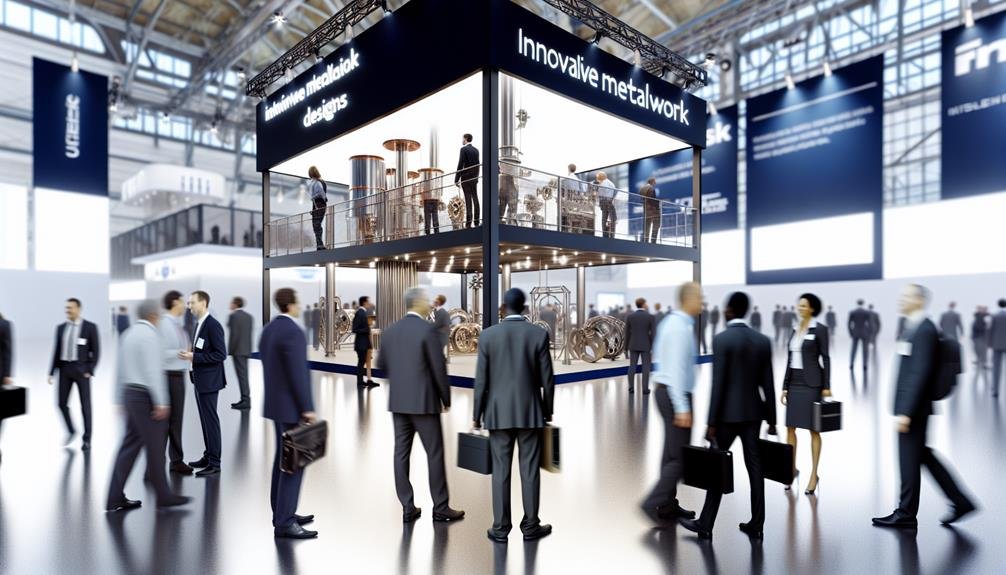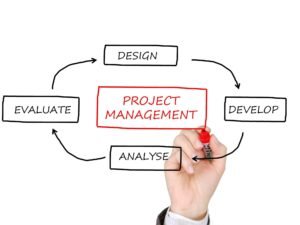Designing Custom Trade Show Exhibits for the Metal Tradeshow

When you’re tasked with designing a custom trade show exhibit for the Metal Tradeshow, it’s crucial to start by understanding your audience. You need to know who you’re targeting within the metal industry to tailor your exhibit accordingly. Setting clear goals and strategically designing the layout can make all the difference in managing traffic flow and creating distinct zones. But how do you incorporate cutting-edge technology and highlight key products while engaging attendees in a memorable way? Let’s explore the essential steps that can transform your exhibit into a standout attraction.
Understanding Your Audience
Understanding your audience is crucial in designing effective custom trade show exhibits for the metal tradeshow. You need to dive deep into audience demographics to tailor your exhibit to the right people. Are they engineers, buyers, or distributors? Knowing who they’re helps you create a design that speaks directly to them.
Use visual creativity to capture their attention with a display that resonates with their professional interests and needs.
Targeting interests means understanding what drives your audience. Are they looking for cutting-edge technology, sustainable solutions, or cost-effective options? Highlight these aspects in your exhibit. You can use interactive elements like touch screens or virtual reality to demonstrate how your products meet their specific needs.
Ensure your messaging is clear and direct, addressing their pain points and showcasing your solutions.
Industry knowledge also plays a key role. Stay updated on the latest trends and technologies in metal trades. Incorporate these insights into your exhibit design to demonstrate your expertise and relevance.
Setting Clear Goals
Setting clear goals for your custom trade show exhibit is essential to ensure you maximize your return on investment and achieve measurable success. Start by identifying what you aim to accomplish. Are you looking to generate leads, enhance brand awareness, or showcase new products? Your goal alignment with these objectives will guide your exhibit’s design and strategy.
Next, break down your goals into measurable objectives. Instead of aiming for “more leads,” set a target like “capture 100 qualified leads.” This specificity allows you to assess your success accurately. Utilize metrics such as booth traffic, engagement rates, and post-event follow-ups to measure outcomes against your objectives.
Incorporate visual creativity to attract and engage your target audience. Eye-catching graphics, interactive displays, and innovative product demonstrations can help you achieve your goals. However, ensure these creative elements align with your measurable objectives.
For instance, if your goal is to showcase a new product, a hands-on demo area can be particularly effective.
Designing the Layout
With clear goals in place, you can now focus on designing the layout of your custom trade show exhibit to effectively support those objectives. Start by considering traffic flow; you want to guide attendees naturally through your space. Use wide, open pathways to encourage movement and minimize congestion. Place high-interest elements like product demos or interactive displays at focal points to draw in visitors and keep them engaged.
Next, think about brand positioning. Your exhibit should clearly communicate your brand’s identity and values. Utilize large, eye-catching graphics and strategically placed signage to reinforce your message. Position your logo and key branding elements at various heights to ensure visibility from a distance and close-up.
Create distinct zones within your exhibit for different activities, such as product showcases, meeting areas, and information kiosks. This segmentation helps manage traffic flow and enhances the visitor experience. Elevate your brand positioning by aligning these zones with your overall marketing strategy, ensuring each area supports your key objectives.
Incorporating Technology
Leveraging cutting-edge technology can significantly enhance the impact and functionality of your custom trade show exhibit. By integrating interactive displays, you can captivate attendees, offering them an engaging way to explore your products and services. Consider touchscreens that allow users to navigate through product specifications, view high-definition images, and watch demonstration videos. These interactive elements not only attract attention but also provide a memorable experience that can set your exhibit apart from the competition.
Virtual reality experiences are another powerful tool you can use to immerse visitors in your brand’s story. Through VR headsets, attendees can take virtual tours of your facilities, witness the manufacturing process, or even interact with your products in a simulated environment. This not only highlights your technological prowess but also leaves a lasting impression on potential clients.
Additionally, incorporating real-time data analytics into your displays can help you gather valuable insights about attendee behavior. Understanding which aspects of your exhibit draw the most attention allows you to refine your strategy for future shows. By combining these technological elements, you ensure that your exhibit isn’t just a static display but a dynamic, interactive experience that resonates with your audience.
Highlighting Key Products
While cutting-edge technology can draw attendees to your booth, showcasing your key products is the core of your trade show exhibit. Your product showcases need to be both functional and visually captivating. Start by selecting your flagship products that best represent your brand’s strengths and innovations. Use well-lit display cases and podiums to draw attention and give these products the spotlight they deserve.
Your brand messaging should be seamlessly integrated with these showcases. Position banners and digital screens that highlight key features, benefits, and unique selling points. Make sure your messaging is clear, concise, and aligned with your overall brand identity. Use high-quality graphics and professional design elements to create a cohesive and attractive presentation.
Interactive displays, such as touchscreens or AR experiences, can also enhance your product showcases by allowing attendees to explore product details at their own pace. This not only educates them about your offerings but also creates a memorable experience that reinforces your brand’s value.
Engaging Attendees
Engaging attendees at a metal tradeshow requires a blend of technical expertise, visual creativity, and industry knowledge. You need to captivate your audience from the moment they approach your exhibit. Start by incorporating interactive experiences that allow attendees to engage directly with your products.
Hands-on demonstrations, virtual reality simulations, or augmented reality overlays can show the practical applications of your metals in real-time.
Immersive displays are crucial for drawing in a crowd. Use LED screens, 3D models, and dynamic lighting to highlight the unique properties and uses of your materials. Create a visually stimulating environment that reflects your brand’s identity while showcasing your technical prowess.
Tailor your content to the specific interests of your audience. Provide detailed information on the latest industry advancements and how your products meet those needs. Engage in meaningful conversations with attendees to understand their challenges and how your solutions can help.
Conclusion
Remember, designing your trade show exhibit is like crafting a well-oiled machine. Just as precision engineering ensures flawless performance, your carefully planned layout, engaging technology, and spotlight on key products will captivate your audience. Consider a metalworker’s intricate design: each piece meticulously placed to create a masterpiece. Your exhibit should do the same—strategically designed to attract, engage, and leave a lasting impression, ensuring your brand stands out in the bustling tradeshow environment.







